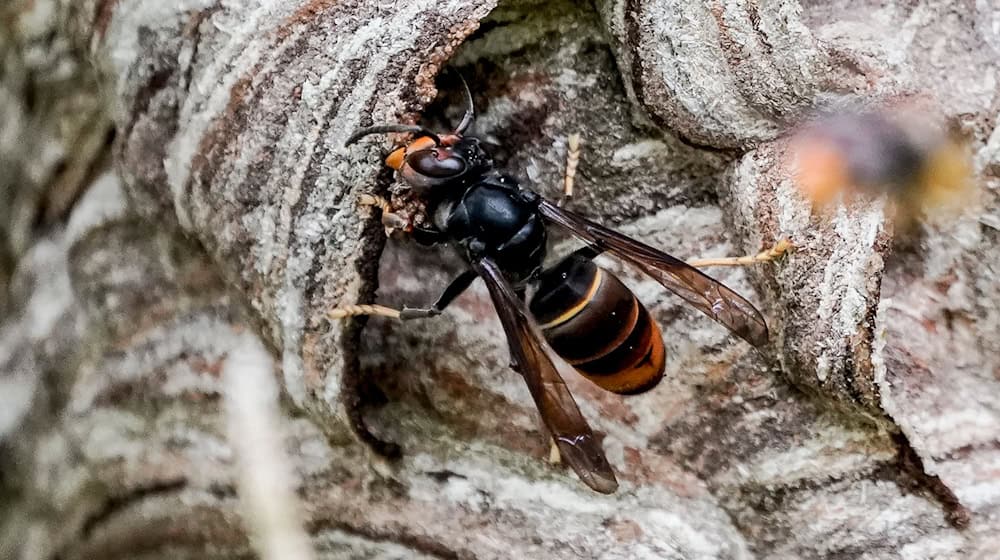The Asian hornet, which has been introduced to Europe, is spreading in other federal states, but there is still no evidence of it in Saxony. Karin Bernhardt from the State Office for Environment, Agriculture and Geology said in response to a dpa inquiry that 41 reports had been received since spring. However, none of the cases involved one of the invasive insects.
Given the continuing spread in western German states, however, findings are also to be expected in Saxony. At the beginning of April, the state office sent a circular to beekeepers calling on them to report observations of the Asian hornet (Vespa velutina).
The hornets prey on other insects to raise their larvae, explained Bernhardt. "Honey bees can account for up to two thirds of their diet, especially in urban areas." It is therefore to be expected that these hornets are most likely to be found at beehives if they settle in the state.
Imkeepers worried about their bees
"We should not underestimate the new threat to our bees," the Saxon Beekeepers' Association appealed to its members in a circular. "Massive losses are the result of an invasion of this hornet species."
Recently, it was reported from North Rhine-Westphalia and Baden-Württemberg, for example, that these insects are spreading rapidly there. In NRW alone, there were more than 100 sightings from January to May, after this insect had been detected there for the first time almost two years previously.
According to the authorities, it is now strongly represented in Baden-Württemberg. Last year, 550 nests were found there - a twenty-fold increase compared to the previous year. Experts expect up to 1000 nests this year.
How to recognize the Asian hornet
The Asian hornet is smaller than its European relative, but more aggressive. It is also slightly darker. It ambushes bees at its hive and kills them in flight.
It is originally native to Southeast Asia, but was probably introduced to Europe via imported goods. According to the German Nature and Biodiversity Conservation Union (Nabu), it was first detected in Germany in 2014 near Karlsruhe.
The Saxon state office is asking people to report any sightings, including photos, to the species protection department by email. "Early detection is essential for the effectiveness of countermeasures," emphasized Karin Bernhardt from the State Office for the Environment, Agriculture and Geology.
Copyright 2024, dpa (www.dpa.de). All rights reserved










